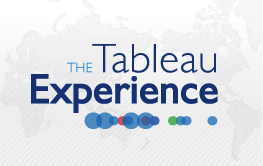Today I would like to write about the other BI – Business Innovation.
Much is being written today about Apple’s “Back to the Mac” event and the unleashing of the Lion, king of the jungle, aka Mac OS X 10.7. And much should be written. Because Mac OS X not only underpins the Macintosh, but a variant named iOS underpins the iPhone, iPod Touch, iPad, and the recently released Apple TV. While much of the attention focuses on the visible part of mobile computing- for example, two-fingered gestures controlling Angry Birds– none of it would be possible without the silent stability of the underlying operating system.
Business innovation simply isn’t possible when the foundation is shaky. Several of Apple’s competitors have stumbled deploying their classic OS to new platforms. Microsoft offered several mobile permutations of its flagship Windows before throwing in the towel, building something from scratch, slapping the Windows 7 label on it and hoping nobody would notice. Palm‘s rocky journey from Palm OS to webOS is legendary. At least to me, the jilted Palm Treo 680 owner that switched to an Apple iPhone 3GS. And even Blackberry demoed its Playbook tablet at a distance and kept the prototypes under glass at their recent unveiling. The Playbook uses the widely admired QNX OS which Blackberry purchased earlier this year, not its legacy Blackberry OS. All three vendors are hoping that their brand strength will motivate developers to create sustainable ecosystems around their new and untested mobile platforms to gain market share (and mind share) from Apple and Google.
Just as Apple has a sturdy OS foundation in its Mac OS X, SAP has a sturdy business intelligence foundation with SAP BusinessObjects Enterprise – soon to be rebranded as SAP BusinessObjects Business Intelligence 4.0. When BusinessObjects announced its $820 million acquisition of Crystal Decisions in 2003, the obvious assumption was that the company needed the Crystal Reports product. But it was Crystal Enterprise, Crystal Decisions’ server platform, that would quietly become the foundation of BusinessObjects XI and future BusinessObjects product strategy. Embracing Crystal Enterprise was a radical and risky departure from previous versions of BusinessObjects.
But the new server platform was a catalyst for rapid innovation. Although Crystal Reports was the only supported document type in Crystal Enterprise 10, Web Intelligence was added in version XI Release 1. Desktop Intelligence shortly followed in version XI Release 2. The Enterprise platform enabled new features such as multi-dimensional analysis (Voyager) and content search with the XI Release 2 Service Pack 2 Productivity Pack. Then came Polestar, which was last year re-branded as Explorer. Enterprise XI 3.0 ushered in LifeCycle Manager and enhanced publication support. Enterprise XI 3.1 Service Pack 3 added specialized Xcelsius dashboard servers.
Each of these products is demonstrated with a flashy front end. However, the products simply wouldn’t exist without the highly-scalable, multi-OS server architecture and its reusable security and storage features. And while this week Apple is talking about the future of Mac OS X, FaceTime video chat, and new ultra-thin MacBook Air laptops, SAP is simultaneously talking about the future of business intelligence at SAP TechEd. And we’ll be hearing more as we move toward GA (general availability) next year.
So where is the platform for business innovation in your business intelligence organization? It may be neither glamorous nor customer-facing, but nonetheless, it must be in place for successful business innovation.
More to come…


